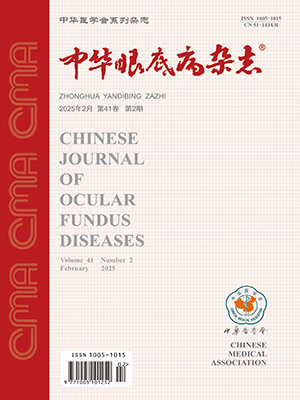| 1. |
Finger RP, Charbel Issa P, Ladewig MS, et al. Pseudoxanthoma elasticum: genetics, clinical manifestations and therapeutic approaches[J]. Surv Ophthalmol, 2009, 54(2): 272-285. DOI: 10.1016/j.survophthal.2008.12.006.
|
| 2. |
Secretan M, Zografos L, Guggisberg D, et al. Chorioretinal vascular abnormalities associated with angioid streaks and pseudoxanthoma elasticum[J]. Arch Ophthalmol, 1998, 116(10): 1333-1336. DOI: 10.1001/archopht.116.10.1333.
|
| 3. |
Takeshita T, Ozaki M. Central retinal artery occlusion in a patient with pseudoxanthoma elasticum[J]. Hiroshima J Med Sci, 2003, 52(2): 33-34.
|
| 4. |
Pournaras CJ, Rungger-Brandle E, Riva CE, et al. Regulation of retinal blood flow in health and disease[J]. Prog Retin Eye Res, 2008, 27(3): 284-330. DOI: 10.1016/j.preteyeres.2008.02.002.
|
| 5. |
McLeod D. Central retinal vein occlusion with cilioretinal infarction from branch flow exclusion and choroidal arterial steal[J]. Retina, 2009, 29(10): 1381-1395. DOI: 10.1097/IAE.0b013e3181b85f41.
|
| 6. |
Ragge NK, Hoyt WF. Nettleship collaterals: circumpapillary cilioretinal anastomoses after occlusion of the central retinal artery[J]. Br J Ophthalmol, 1992, 76(3): 186-188. DOI: 10.1136/bjo.76.3.186.
|
| 7. |
Karam E, Restrepo A, Assael S. Disappearance of myelinated retinal nerve fibers after central retinal artery occlusion reveals nettleship collaterals[J/OL]. Ophthalmology, 2017, 124(9): 1295[2017-09-01]. https://pubmed.ncbi.nlm.nih.gov/28823346/. DOI: 10.1016/j.ophtha.2017.01.051.
|




